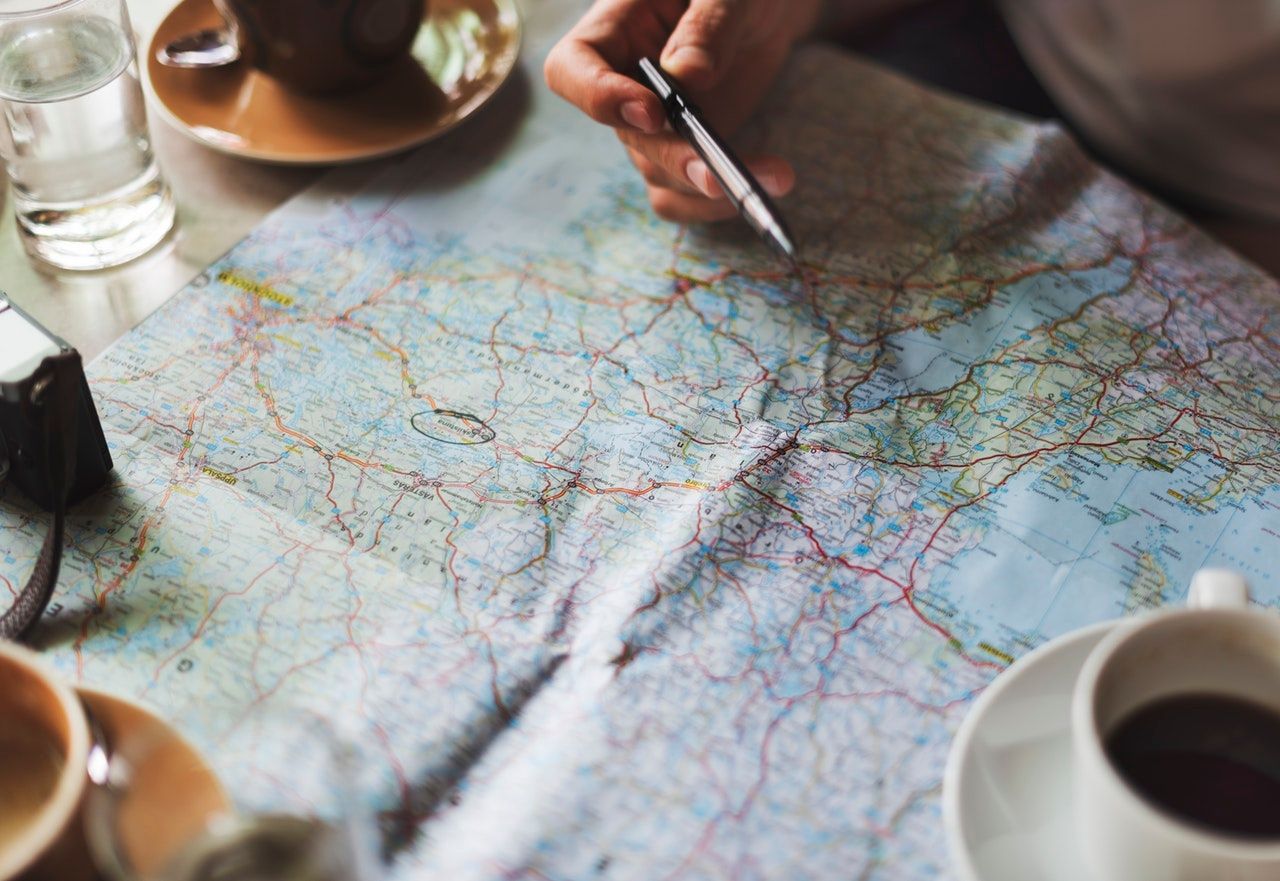The Best Ways to Give and Ask for Directions in English

Ever found yourself lost in a different country where your native language isn't necessarily the language spoken there? Maybe stuck at an airport in between two flights? Yes? Okay, great.
This article will provide you with the best words and phrases for giving and asking for directions in English regardless of where you go and the local language spoken there.
However, before going further into details, I'd like for us to first go over one essential, which all the other words and phrases simply cannot go without.

Excuse Yourself
When asking for directions, never underestimate the power of your first impression on other people. Different cultures have different customs, hence different ways of greeting people, especially in public places.
It is the defining moment before one gets directions that are actually true or gets some at all.
Therefore, when you're asking for directions, it is vital that you always approach a stranger with a simple "Excuse me" or "Sorry" before doing so. An immediate "Hello", "Hi" or "Can I ask you a question?" might exert different reactions and even push people away, depending on the context.
However, an "Excuse me" is simply the perfect introduction to whatever question or conversation you might have. Because English is such a widely spoken language, people will immediately understand that you are trying to converse in English and get themselves ready to help you.
Let's consider the following examples:
Hi. or Hello + main question
Can I ask you a question? + main question
While these expressions are pretty straight-forward and easy to utter, they might not exert the required reaction and might actually scare people away if you startle them, as explained above. How about adding "Excuse me" at the beginning of your conversation right before asking your desired question?
Excuse me. Hello. + main question
Sorry. Hi. Can I ask you a question? + main question
Excuse me. Hi. Can I ask you a question? + main question
Ah… suddenly, the air's a bit clearer. You not only sound pleasant, but people actually want to help you.
Other polite expressions and useful phrases you can throw in there are:
Sorry to bother you.
I'm (kind of) lost.
I'm struggling to find my way around this map.
The same goes for giving directions. Greet people with a simple "Hello" or "Hi" even if they don't do so in the first place.
Trust me, simple verbal gestures like this can be game-changers as far as getting your conversation with a stranger in a foreign city or country to the next level.
Once you've mastered the art of approaching someone the right way, the next step involves showing how well you can actually lead a conversation in English to either get or give the desired directions, regardless of whether it's in the street, at an airport or right next to your seat on the public transport.

Get Directions Quickly
If you want to ask for directions and get them, you have to be able to use the right expression, phrase or question at just the right time in order to make the person you’re approaching understand you and help you, at the very best.
To do so, here are some extremely helpful utterances that more or less never fail to hit their mark.
Could you (please) tell me where ... is?
Could you tell me where the new Starbucks is?
I'm looking for... Could you (please) tell me where it is?
I'm looking for the Empire State Building. Could you please tell me where it is?
Could you (please) help me find…?
Could you help me find the Rotler's library on 6th Street?
Which way (leads) to...?
Which way to Madison Square Garden?
May I ask where ... is?
May I ask where Marienplatz is?
How do I get to...?
How do I get to the nearest metro station?
Note #1: In the sentences above, "could" can easily be replaced with "can" in each case. However, "could" is a tad bit more polite.
Note #2: Always remember to thank the person helping you by using any of the common English phrases used to show appreciation, such as "Thank you", "Thanks a lot", "Highly appreciate it", "God bless you", etc.
Moreover, it would be even better if you did some research beforehand about the most common greetings in that location to truly show your appreciation, regardless of what you say is in English or not.

Give Directions Cautiously
If you happen to get approached by someone in need of directions, it is your sacred duty to help them. Granted, you yourself might be a foreigner in a foreign country being approached by another foreigner in need of those directions, but isn't that what language is supposed to do - connect people?
Here are some great ways to always lend a helping hand and practice (or flaunt) your English in a conversation where you're the one giving the directions, not the other way around. I'll try to cover as many examples as possible, given the number of different situations one can find themselves in.
Go straight ahead on
Go straight ahead on Route 25 for 2 miles.
Go down
Go down Route 25 for 2 miles.
Go along
Go along Route 25 for 2 miles.
Follow
Follow Route 25 for 2 miles.
Note: The four examples above carry absolutely the same meaning in terms of directions. The verb "go" can also be easily replaced with e.g. "walk", "run", "proceed", "continue", etc. and many other vocabulary items, depending on the context.
Turn right/left
Turn right on 5th and Lurk.
Take a right/left turn
Take a right turn on 5th and Lurk.
Make a right/left turn
Make a right turn on 5th and Lurk.
Note: The three examples above carry absolutely the same meaning in terms of directions, as well. You can show even greater language skill by incorporating even more information in such a short expression, e.g. "take the first/second turn right/left" depending on the context.
Head to
Head to the Majestic Fountain and then turn right before the entrance.
And many more…
Now, there are a few more conversational aspects to consider when giving directions to someone:
- Chronological order
Carefully provide correct but clear directions, regardless of how complicated they might seem. You can easily do that by putting the required steps in a somewhat chronological order through the usage of words such as: "First", "Second", "Then", "Once you get there", etc.
First, take the left turn right here. Then, go straight ahead on Road 25 for about 2 miles. You're supposed to reach a big roundabout. Once you get there, take the right exit and proceed...
- Spatial Prepositions
To better explain where a specific place or building is located in relation to something else, use prepositions, such as "over", "under", "around", "next to", "near", etc.
Go around the statue and proceed down the running lane.
Once you go under the bridge, there should be a bus station nearby.
- Advice and Suggestions
The easiest route might not always be the fastest one. You know it; I know it. Sometimes, bad traffic or construction work gets in the way of a great traveling experience. If you're aware of that, you should share. Still, try to make your English as clear as possible for any listener.
Going down Route 25 might seem shorter, but you're gonna wanna going to want to take a left turn to Route 26 and take the second exit on the first roundabout. That way, you can avoid any possible traffic. That road usually gets flooded very busy at this time of day. Trust me, I know what I'm talking about!
Oh... and no matter who you're talking to, don't use idioms or uncommon expressions to get your point across. Simple, plain English will suffice. You can still demonstrate your English knowledge and conversational skills without these pretty well.
Of course, that's as long as you don't make any pronunciation mistakes that are not necessarily native-like.

The Round-Up
Whether you're the one giving or asking for directions, it only matters that one doesn't get lost. Wherever you are in the world, the English language will almost never let you down.
A simple "Excuse me" can take you places. However, knowing what to say right after that is what always determines the next step on your journey, regardless of where and how you travel.
Use your English like a pro when you travel. Just try to remember today's tips on your next trip around the world to ensure you or anyone else traveling never misses a destination again.
Bon voyage!
